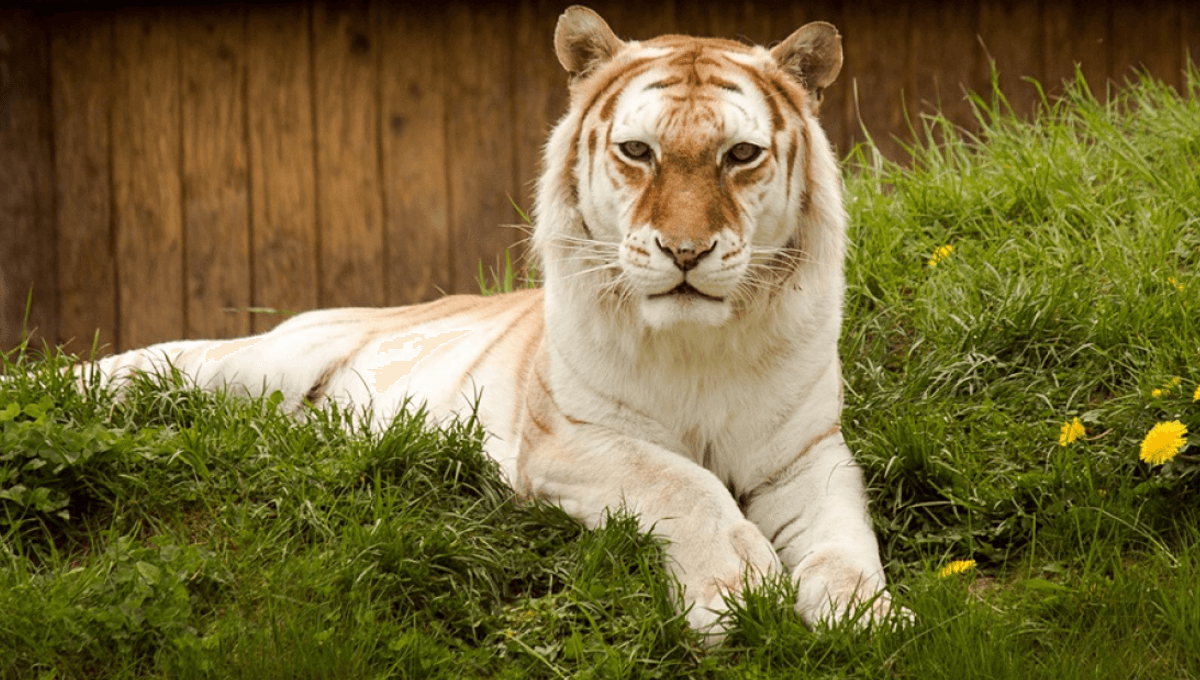Golden Tigers Are Among The Rarest Big Cats In The World, But They Spell Bad News For Tigers

What Are Golden Tigers? These Rare Tiger Morphs Have Only Been Found In One National Park In India
In 2024, wildlife photographer Gaurav Ramnarayanan had a very unexpected encounter with one of the rarest big cats in the world. While exploring Kaziranga National Park in India, he saw a tiger that didn’t look like any he had seen before, with strawberry-blonde fur and large tufts of white. It was a golden tiger, one of the rarest big cats in the world.
The rest of this article is behind a paywall. Please sign in or subscribe to access the full content. There are estimated to be around 30 golden tigers in captivity across the globe, but only four are known to live in the wild, and all of these have been reported from Kaziranga National Park. While the pale coat is undeniably very beautiful, it spells bad news for these big cats and the future of Kaziranga’s wild population. Golden tigers are the result of a rare genetic mutation. It’s a recessive trait, meaning the mutation is only expressed when an individual inherits two copies of the same recessive allele: one from mom, and the other from dad. This is why they are among the rarest tiger morphs in the world. They’re not a different species, just Bengal tigers (Panthera tigris tigris) that have picked up what Uma Ramakrishnan, a professor of ecology at India’s National Center for Biological Sciences, likened to "spelling mistakes in the DNA". These genetic quirks alter a "wideband" gene that influences pheomelanin production, resulting in tigers that can be snow-white, but golden tigers are even rarer than these stripeless morphs. Though rare, golden are seen on occasion in Kaziranga. One individual featured in an image captured by Wildlife Photographer Of The Year 2026 judge Sudhir Shivaram that was recently shared by the London Natural History Museum. ⓘ IFLScience is not responsible for content shared from external sites. "Here we have one of the rarest big cats on Earth — the Golden Tiger," Shivaram said in the post. "Only a handful of such tigers are known to exist in the wild." "I photographed this individual in Kaziranga Tiger Reserve, India, as it moved silently through the undergrowth, its unusual coat glowing against the green of the forest. This moment was not only about rarity but also about wonder — a reminder of how nature continues to surprise us with its endless variations. The Golden Tiger symbolizes the fragility of wild species: rare, magnificent, and vulnerable, relying on protected habitats like Kaziranga to survive." Golden tigers are more common among captive populations, a worrying trend that has at least in part been driven by a desire for exotic "exhibits". In a 2024 paper, Ramakrishnan and colleagues explore how breeding programs have specifically selected for these rare morphs, even though it’s a known product of inbreeding. “The pace of breeding in privately owned tiger populations has prompted concerns of inbreeding, especially since phenotypes (i.e., striped whites, snow whites, and golden tigers) that rely on rare, recessive mutations are considered to be of high economic value,” they explained. “In fact, the white tiger (“Bengal”) breeding program was discontinued by the AZA [Association of Zoos and Aquariums] when the intentional selection for the single variant responsible for producing the white phenotype was determined to be detrimental to conservation. The phenotype attracts unwanted attention from exotic breeders, and since it is a recessive mutation, the phenotype was generally achieved through inbreeding.” Golden tigers likely became more common in captivity because their rare recessive trait was selected for despite the known dangers of inbreeding. The existence of golden tigers in Kaziranga raises concerns that inbreeding is reducing the genetic diversity of this population, much like the pseudomelanistic tigers that are becoming increasingly common in India's Similipal Tiger Reserve. The incidence of these black morphs is much higher compared to golden tigers, as now close to half of the reserves’ population has the characteristic thick black coat of pseudomelanistic tigers. As Ramakrishnan told CNN, the emergence of golden tigers in Kaziranga since 2014 would suggest that either this recessive gene variant is becoming more common through genetic drift, or inbreeding is increasing the likelihood of it being expressed. Given that fragmentation of populations is a key concern in the conservation of wild tigers, it puts even more pressure on the need to prevent further losses through poaching and habitat degradation to restore the genetic diversity of India’s Bengal tigers.Golden tigers in the wild
Golden tigers in captivity

What golden tigers mean for conservation


